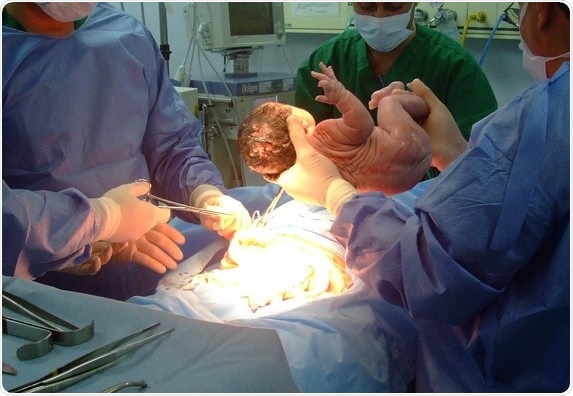Oct 19 2018
Pregnant women in mainland China, Hong Kong, and Taiwan are more likely to express preference for cesarean section (CS) as their mode of delivery later in pregnancy and postpartum, as compared to early in pregnancy, according to a study published this week in PLOS Medicine. The study, conducted by Qian Long of Duke Kunshan University in China, and collaborators, found that fear of pain, antagonistic relations with providers, and beliefs of deteriorating quality of care during labor and vaginal birth contributed to perceptions of planned CS as preferable.

Credit: SantaRosa OLD SKOOL, Flickr
The CS rates in mainland China, Hong Kong, and Taiwan are roughly or over 30% according to recent studies, though WHO research has shown that population-level CS rates higher than 10% are not associated with reduced maternal or newborn mortality. To understand why, Long and colleagues conducted a mixed-methods systematic review of quantitative and qualitative studies that investigated preferences for CS among women in these settings. The researchers found that in longitudinal studies, the pooled proportions of preference for CS reported by women were 14% in early or middle pregnancy (95% CI 12-17%) and 21% in late pregnancy (95% CI 15-26%). In cross-sectional studies, the proportions were 17% in early or middle pregnancy (95% CI 14-20%), 22% in late pregnancy (95% CI 18-25%) and 30% at postpartum (95% CI 19-40%). Women’s preferences for CS in longitudinal studies were found to rise as pregnancy progressed (mean difference 7%, 95% CI 1%-13%). Qualitative data indicated that women who prefer CS in China are informed by healthcare system interactions, unsatisfactory relationships with providers, concerns about quality of care during labor and vaginal birth, and social support for the right to choose CS.
Study limitations include heterogeneity and potential biases among the reports reviewed, which were not population-representative. However, results across 66 longitudinal, cross-sectional, and qualitative studies were concordant. The authors state:
Both quantitative and qualitative findings in this review suggest that women’s request for CS on the basis of genuine preference for this mode of delivery is unlikely to be the major driver of high CS rates and that women’s preference may underscore health systems deficiencies and sub-optimal relationships with health professionals.”
In an accompanying Perspective, Mairead Black and Sohinee Bhattacharya of the University of Aberdeen, United Kingdom, discuss possible benefits of planned CS where only one child is planned, emphasize the importance of Chinese data to clarify the outcomes of planned CS, and argue for a woman-centric approach to facilitating birth choices in China following the end of the one-child policy.